#175 Artist among the Songhees
Wanderings of an Artist Among the Indians of North America
by Paul Kane, edited and with an introduction by Kenneth Lister
Toronto: Royal Ontario Museum Press, 2016
$39.99 / 9780888545077
Reviewed by Grant Keddie
First published October 3, 2017
*
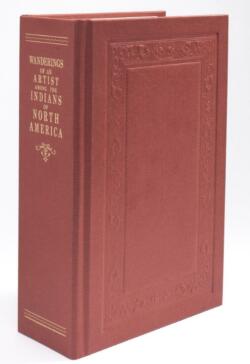 Between November 1846 and November 1847, the Irish-Canadian artist Paul Kane (1810-1871) visited the Columbia Department of the Hudson’s Bay Company, travelling by HBC brigade, canoe, horseback, and on foot and snowshoe.
Between November 1846 and November 1847, the Irish-Canadian artist Paul Kane (1810-1871) visited the Columbia Department of the Hudson’s Bay Company, travelling by HBC brigade, canoe, horseback, and on foot and snowshoe.
He was in the Victoria area between April and June 1847, drawing and painting in the territory of the Songhees (Lekwungen) people.
Kane’s classic account, Wanderings of an Artist among the Indians of North America: from Canada to Vancouver’s Island and Oregon through the Hudson’s Bay Company’s territory and back again (London: 1859), has now been reprinted by the Royal Ontario Museum, edited and with an introduction by Kenneth Lister.
Reviewer Grant Keddie, author of the acclaimed Songhees Pictorial: A History of the Songhees People as seen by Outsiders, 1790-1912 (Royal British Columbia Museum, 2003) enlarges on Kane’s Songhees paintings and provides additional depth and detail. – Richard Mackie
*
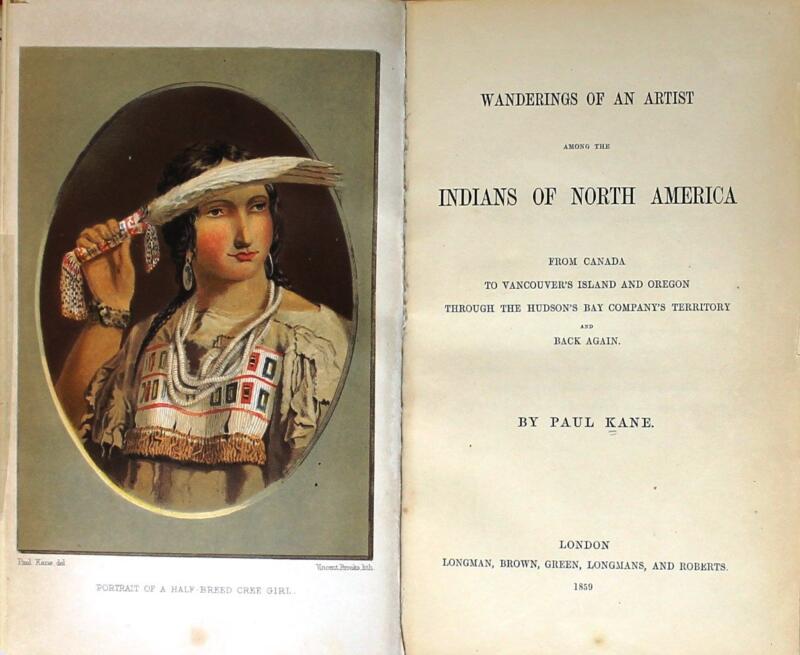
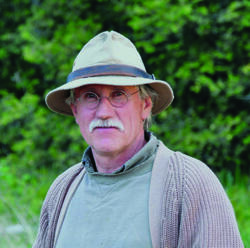
Ken Lister has been at the forefront of curating and promoting the works of Paul Kane, an invaluable source of history and ethnography for British Columbia and Canada in the mid nineteenth century.
After his 2010 magnum opus on Kane’s images — Paul Kane, the Artist: Wilderness to Studio – it is a natural follow-up for Lister to fulfill Kane’s expressed dream by producing this enhanced version of his 1859 classic, Wanderings of an Artist, with 97 colour plates.
Lister’s use of eight comparative lithographs by the London artist Vincent Brooks (1815-1885) and thirteen woodcuts allows us to gauge the differences between the original sketches and paintings and these other forms of presentation.
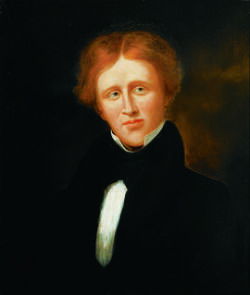
Wanderings of an Artist contains both a new index and a copy of the original appendix, including a map of Kane’s travels and, most important to British Columbian researchers, the “Census of Indian Tribes inhabiting the Northwest Coast of America for the Year 1846,” with the latest information provided by Hudson’s Bay Company personnel.
This fine and enlarged reprint of Kane’s original work is a wonderful tribute to Kane and the role his artistry has played in capturing important moments in nineteenth century Canadian history.
Kane’s prodigious artistic output requires scholars qualified to situate his images in various local histories, ethnologies, and geographies. This is where researchers of Kane’s images sometimes fall short.
I can only judge the portions of this volume that bear on Kane’s visit to Victoria in 1847. My own analysis results from having lived in Victoria West for 45 years and undertaken archaeological and historic studies at the locations of Kane’s images.
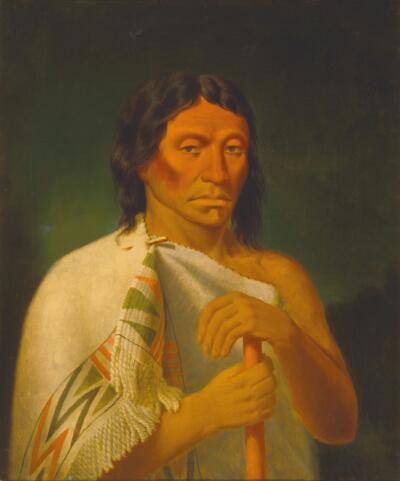
In the 1970s, when I bought the 1925 version Wanderings of an Artist, I saw that some information had been placed out of its proper context, such as the discussion of sturgeon in Victoria, which must have been a product of Kane’s observations of the larger white sturgeon on the Columbia River. Only the small green ocean-going sturgeon is occasionally found in the Victoria region.
Another inaccuracy concerned the activities of “Chea-clach,” Kane’s anglicized version of a ranking Songhees of the Victoria area who took him on a voyage “round the Straits of De Fuca” in May, 1847. The little expedition ran “up the east side of Vancouver’s Island, and crossed the canal De Aro [Haro Strait] to the main land.” On nearing a village containing “between five or six hundred Indians,” Kane gave the same name “Chea-clach” to the “chief of the Clallams” in charge at the village (Harper 1971, p. 103; Keddie, 2003).
There is obvious editorial confusion here. Kane did not visit “the mainland” during this trip. In fact, he and Chea-clach (also known as Chee-ah-thluc, Chil-a-thuck, and King Freezy) visited Chea-clach’s own reef netting station at Eagle Bay on San Juan Island and then proceeded to the Lummi village in Fisherman Bay on Lopez Island.
Wayne Suttles’ consultant Matilda Charles, whose father was Lummi, noted that her grandfather’s name was “Cloll-uck” and was a head person at this Lummi village (Suttles 1974, p. 198). In all probability Chea-clach and Cloll-uck were one and the same person.
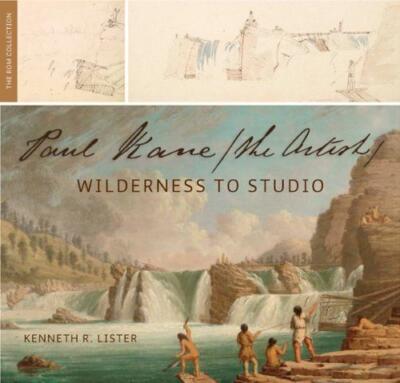
As Ian MacLaren (1987; 1989; 1992) makes clear, multiple authors and a lot of confusion surround the works of Kane. When reading the comprehensive overview of the work of Kane by Russell Harper (1971), I was impressed by the accuracy of the information in Kane’s original “Landscape Logs” and “Portrait Logs,” which fortunately have survived and are included in the appendices to this publication.
Inaccuracies have, however, persisted, especially references to non-existent villages in “Esquimalt Harbour.” It is unfortunate that Lister’s excellent book about Paul Kane, Wilderness to Studio, perpetuated erroneous information from Harper and others about the placing of the villages in Esquimalt Harbour. This mistaken information is then repeated in captions for three of the plates in the volume under review.
In fact, none of the villages drawn by Kane are in Esquimalt Harbour (Keddie 2003, pp. 24-30; 2013a; 2013b). Moreover, all Kane’s images of villages are of one single village — the main village on the site of the Old Songhees Reserve, on the north side of Victoria Harbour in what is now the community of Victoria West on the eastern end of the Esquimalt Peninsula.
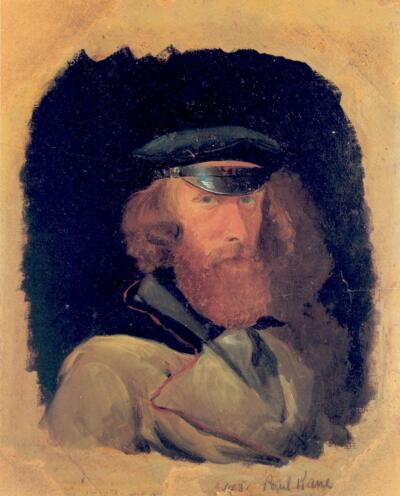
When Kane used the term “on the Esquimelt” or “the Esquimelt,” he was referring to the Esquimalt Peninsula, not Esquimalt Harbour, which is a journey around the coastline of about three kilometres from Victoria Harbour. Even today, many people in Victoria mistakenly refer to all the area on the west side of Victoria Harbour as being in Esquimalt.
Kane, for example, mentions that “Saw-ce-a, the head chief of the Cowichans from the Gulf of Georgia…. had come to the Esquimelt on a friendly visit” (p. 220). He does not say Esquimalt Harbour here. He means Esquimalt Peninsula, which occupies the entire western shoreline of Victoria Harbour.
Kane is partly responsible for some related confusion. When he is clearly referring to Victoria harbour and the Gorge Waterway, he — or an early editor? — noted that “Its Indian name is the Esquimelt, or, ‘Place for gathering camas…’” (p. 208). Although the open areas around Fort Victoria on the east side of Victoria Harbour were important for harvesting the bulb of the camas plant, the anglicized word “Esquimelt” (and other spellings) has nothing to do with the subject matter of camas.

At the left foreground is a misplaced image of the front part of the same village that also appears, correctly, in the right background. Kane is exercising artistic licence with this composition. This same village is seen in several other drawings and paintings of Kane (see Lister’s Figure 48a).
Lister recognizes that this sketch, “The Esquimalt Indians Village with Canoes,” was used for the composite painting but he did not recognize portions of the same village as shown across the harbour (pp. 280-281).
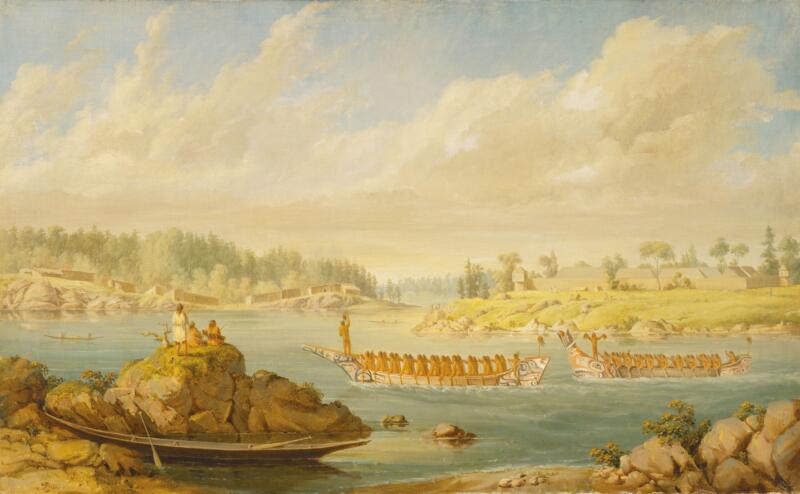
The same village can be seen in Kane’s well-known painting, The Return of the War Party, Lister’s plate 46. The background in this composite image is accurate; it is taken from Kane’s original sketch now in the Stark Museum of Art, in Orange, Texas. It shows Fort Victoria at right and the Songhees village across the harbour at left, on what became the Old Songhees Reserve. At the far left of the background village is the rocky Songhees Point.
But only the background in this composite painting is accurately placed. Other details are not. Added to the foreground are a canoe drawn up on the beach, a rock with a group of people watching, and two canoes coming out of James Bay. Lister recognized that the sketches of canoes used here were from Kane’s “War Party, Juan de Fuca” (Lister’s figure 44d), but he did not notice that the village and harbour in the background were the same Old Songhees Village and Victoria Harbour as in Plate 50. All the First Nations villages shown in these two paintings are of the Old Songhees Reserve in Victoria Harbour.
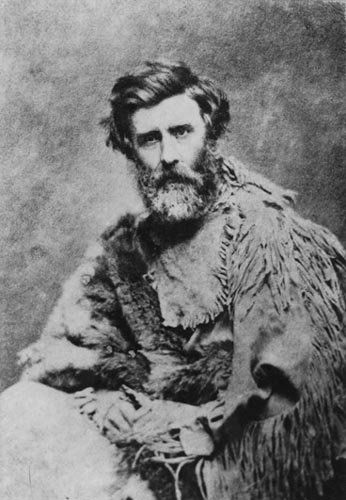
Ken Lister also points to Kane’s willingness to add details that confuse the ethnographic record. This war party image in Victoria Harbour is a fine example. Not only is it a composite from a number of sketches, but infrared reflectography revealed that originally Kane had painted a third leading war canoe. He changed his mind, though, and painted over it with the scene of rocks in the foreground. Therefore one can look in vain for the clump of rocks Kane shows in Victoria Harbour. It is imaginary.
Kane also shows the head canoe being paddled backwards! In Kane’s defence, he might have sketched the canoe when empty, and then back at his Toronto studio, working from his sketches, thought the stern must be the bow.
Another area of confusion is the use of the name “Clallam.” Kane — or an editor? – wrote that, “On the opposite side of the harbour, facing the fort, stands a village of Clal-lum Indians” (p. 209). But the “Landscape Log” and the “Portrait Log” kept by Kane on his 1847 visit were accurate. Kane used different spellings for the Songhees — “Sangeys,” “Sangas,” and “Samas.” He knew the difference between the “Sangeys,” the “Clallum,” and others.
Later editors and exhibitors of his oil paintings have mistakenly referred to some Songhees images as Clallum. Kane himself rarely used the term Clallum. Usually he used the term “Sangeys” for most of the local population. There was, indeed, a Clallum (Klallam) village in Victoria Harbour during Kane’s visit, but it was occupied only for a limited time after the founding of Fort Victoria in 1843 (Keddie 2003: 53-54).
In general, Kane knew the difference between the “Clallam” and “Sanges” people, but he used the term Clallam in a very general sense – as others did — to refer to the larger group of related peoples on the south end of Vancouver Island, some of the Gulf Islands, and the Olympic Peninsula. The Lummi of the American Gulf Islands, now the San Juans, spoke the same North Straits language as the Songhees, Saanich, and Sooke. The Klallam on the Olympic peninsula and, starting in the 1840s at Becher Bay on Vancouver Island, spoke a different language, but one closely related to the North Straits languages.
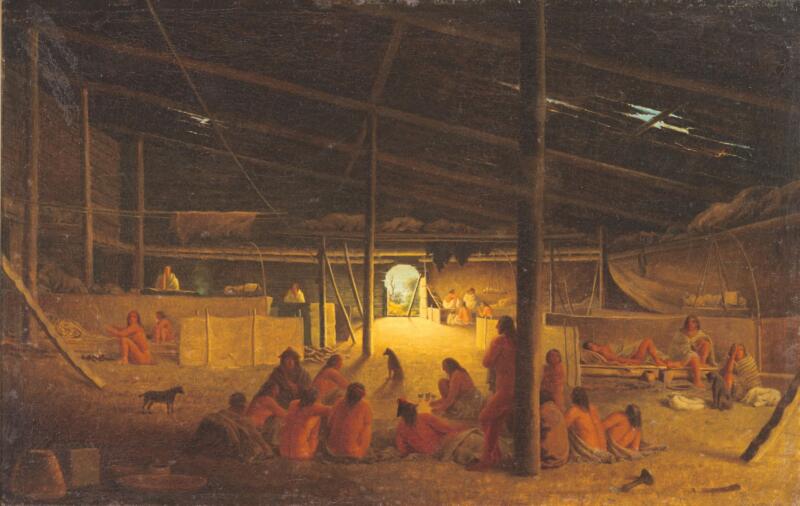
The gamblers in this composite painting include one taken from Kane’s sketch in Field Log no. 60, “Saw-see-a, Head Chief of the Cowitchans.”
Further confusion has resulted from Kane’s interaction with his personal friend, Daniel Wilson, a painter and a professor of history and literature at the University of Toronto. After coming to Canada from Scotland in 1853, Wilson became friends with Kane; and in his biography of Kane, published shortly after Kane’s death (Wilson 1871), Wilson used information from Kane and included his own paintings made from Kane’s sketches and artifacts in his publications (see Wilson 1857, pp. 23, 39-42).
In these, Wilson referred to “Clalams” in the general sense, such as “the Clalam Indians occupying the neighbouring Vancouver’s Island,” and when naming all the First Nations in the larger region, for example, “the Clalams and Newatees on Vancouver’s Island.” But Wilson incorrectly refers to “the Songas [Songhees] and Eusaniches [Saanich] on the southern shores of the Straits of De Fuca” (Wilson, 1862 1, p. 17).
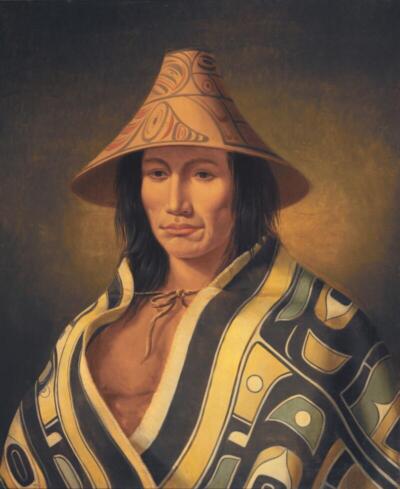
It is, in fact, Sketlesun, a Songhees chief from the old Cadboro Bay village. He is the sixth person named on the Che-ko-nein treaty list of 1850. Because he is wearing a Chilkat blanket and northern style hat, this painting has been mistakenly labelled as a “Tsimshian chief” (Keddie, 2003, p. 30).
This image is clearly identified in Kane’s “Portrait Log” No. 46 as “Ska-tel-san — a Samas Tillicum with a (grass) hat that is much worn here south of de Fuca” (Harper 1971, p. 316).
Similarly, in the catalogue for Paul Kane’s “Exhibition of 1848,” this man is listed as “124. Sca-tel-son – a Songhes Indian, Vancouver’s Island” (Harper 1971, p. 319). But Harper then identifies him erroneously as “A Babine chief” (1971, p. 26).
This reveals a mix-up of information during various exhibits of Kane’s work, when his published books rather than his original — and accurate — field logs were used as the source of information.
The search for the sketch upon which the painting of Sketlesun was based has also been confused. Harper, in the “Catalogue Raisonne” (IV-587), notes that “This canvas is probably based on an unlocated sketch. When lithographed for the frontispiece in the Wilson book, Prehistoric Man, the title was changed to ‘Chimseyan Chief.’”
The error was compounded in the third edition (1876) of Wilson’s Prehistoric Man (Vol. 1), where he identifies this person as “Kaskatachyuh, a Chimpseyan” Chief, and records that he drew it “from sketches by Paul Kane.”
The implication here is that Kane visited Tsimshian or Babine territory. Wilson, when discussing Haida argillite pipes, states they are of the “Babeen Indians,” and asserts, mistakenly, that they are “from a drawing made by Mr. Kane, during his residence among the Babeen Indians” (Wilson 1857, p. 42). But Kane never went north of the Victoria area.
It has been suggested that sketches of First Nations from northern areas not visited by Kane were drawn when these people visited Fort Victoria, but regular visits by northerners did not occur until after the time of Kane’s visit. We need further research to account for Kane’s images of these northerners.
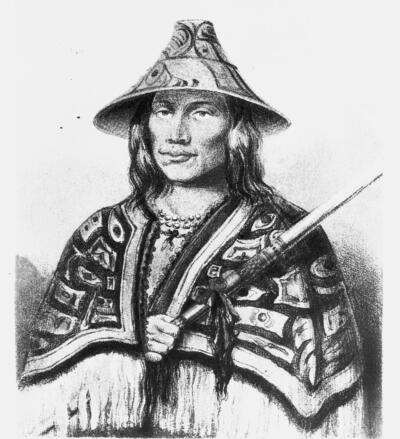
I have been able to solve the puzzle of the origin of the portrait of Chief Sketlesun. The source is a drawing by Kane that is known from a photograph taken by Charles Newcombe during his visit to Toronto in 1906. Newcombe noted that this and other photos were “reproduced by kind permission of E.B. Osler, Esq., M.P., of Toronto, who owns the originals” (Newcombe, 1909, p. 53). Newcombe’s photograph is now at the Royal BC Museum (catalogued as PN17161; see Keddie 2003, p. 3).
Reproduced here for the first time, Kane’s original sketch of Chief Sketlesun is evidently the “unlocated sketch” mentioned by Harper. It is the same image mentioned in Kane’s “Portrait Log” No. 46 as “Ska-tel-san — a Samas Tillicum ….”
Some time after Newcombe took this photograph in 1906, Osler’s original Kane sketch of Sketlesun disappeared. We do not know where the original is, but now at least we now have a photograph of it, which might lead to its re-discovery.
Like other authors, Lister had to depend on information provided by previous scholars, which is only a problem when that information is contradictory or misleading. More work needs to be done at detailed local levels to determine the location of images and the sources of information used for captions in Kane’s work from Victoria and elsewhere on his travels.
For me, clarifying Kane’s Victoria landscapes and portraits has been an ongoing project for 45 years. I am still trying to figure out the locations for some of Kane’s interior house drawings, groups of people, and temporary camp drawings from his brief but productive visit to Victoria in the spring of 1847.
*
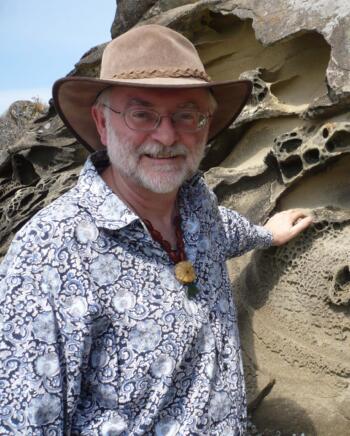
Grant Keddie has been the curator of Archaeology at the Royal B.C. Museum for 45 years. The activities of his job have involved all aspects of research, collections, public programming and fieldwork throughout British Columbia. He is well known for his making and using stone and bone tools. He has a wide range of interests related to both human and natural history and has published many articles from ethnohistory to artifacts and the megafauna of B.C. He is author of the popular book: Songhees Pictorial: A History of the Songhees People as Seen by Outsiders, 1790-1912 (Royal BC Museum, 2003).
*
References:
Garvin, John W. (editor). 1925. Paul Kane’s Wonderings of an Artist. Among the Indians of North America From Canada to Vancouver’s Island and Oregon Through the Hudson’s Bay Territory and Back Again by Paul Kane. The Radisson Society of Canada Limited.
Harper, Russell J. 1971. Paul Kane’s Frontier. Including Wanderings of an Artist among the Indians of North America by Paul Kane. Edited with a Biographical Introduction and a Catalogue Raisonne by J. Russell Harper. The Amon Carter Museum, Fort Worth, the National Gallery of Canada, University of Toronto Press.
Harper, J. Russell. 2017 (1972). “KANE, PAUL,” Dictionary of Canadian Biography, vol. 10, University of Toronto/Université Laval, 2003–, accessed August 11, 2017, http://www.biographi.ca/en/bio/kane_paul_10E.html.
Keddie, Grant. 2013a. “The Imaginary Plank Houses of Henry Warre.” Royal B.C. Museum Web publication.
Keddie, Grant. 2013b. “A Clallam Mat Lodge Village near Fort Victoria.” Royal B.C. Museum Web publication.
Keddie, Grant. 2003. Songhees Pictorial: A History of the Songhees People as seen by Outsiders, 1790-1912. Royal B.C. Museum, Victoria.
Lister, Kenneth R. 2010. Paul Kane, the Artist: Wilderness to Studio. Royal Ontario Museum Press, Toronto.
MacLaren, I.S., ed. 1987. “Notes Towards a Reconsideration of Paul Kane’s Art and Prose,” Canadian Literature 113-114. pp. 179-205.
MacLaren, I.S., ed. 1989. “Journal of Paul Kane’s Western Travels 1846-1848.” Special Issue Journal of American Art XXI, no. 2, pp. 23-62.
MacLaren I.S. 1992. “Exploration/Travel Literature and the Evolution of the Author,” International Journal of Canadian Studies 5, pp. 39-68.
MacLaren I.S. 2012. “Paul Kane’s Wanderings of an Artist and the Rise of Transcontinental Canadian Nationalism,” Canadian Literature 213 (Summer 2012), pp. 16–38.
Newcombe, Charles. 1909. Guide to Anthropological Collection in the Provincial Museum, King’s Printer, Victoria, B.C.
Wilson, Daniel. 1857. Pipes and Tobacco: An Ethnographic Sketch. Lovell and Gibson, Toronto.
Wilson, Daniel. 1862. Prehistoric Man: Researches into the Origin of Civilisation in the Old and the New World, McMillan, Cambridge.
Wilson, Daniel. 1871. “Paul Kane, the Canadian artist.” Canadian Journal, 2nd Series, 13:1, pp. 66-72 (1871-1873).
*
The British Columbia Review
Publisher and Editor: Richard Mackie
Formerly The Ormsby Review, The British Columbia Review is an on-line journal service for BC writers and readers. The Advisory Board consists of Jean Barman, Wade Davis, Robin Fisher, Cole Harris, Hugh Johnston, Kathy Mezei, Patricia Roy, Maria Tippett, and Graeme Wynn. Provincial Government Patron (since September 2018): Creative BC. Honorary Patron: Yosef Wosk. Scholarly Patron: SFU Graduate Liberal Studies.
“Only connect.” – E.M. Forster
2 comments on “#175 Artist among the Songhees”
Comments are closed.